Disco music is more than just a genre 一 it’s a vibrant expression of rhythm, melody, and harmony that has transcended decades.
Its infectious groove and dynamic chord progressions make it a timeless favorite.
That’s why, as a music producer, regardless of what genre you produce, knowing how to create disco chord progressions is an invaluable skill.
It can elevate your tracks, infuse them with the iconic disco spirit, and help you understand the intricate balance between melody, harmony, and rhythm.
In this article, you’ll be diving deep into the world of disco chord progressions, learning about:
- The essence of disco chord progressions ✓
- Major and minor scale roles ✓
- The interplay of chords and melodies ✓
- Rhythm and groove essentials ✓
- Building tracks with root notes and chords ✓
- Music theory applications ✓
- Tips for dynamic major-minor mixes ✓
- Techniques for rhythm and inversion experiments ✓
- Much more ✓
After reading this article, you’ll be equipped to infuse your music with the captivating essence of disco.
You’ll gain insights into crafting memorable tracks that resonate with listeners, and understand the nuances of blending chords, melodies, and rhythms like a professional.
Whether you’re a seasoned producer or just starting, these skills will be an invaluable addition to your musical toolkit.
They will enable you to create musical experiences that echo the unforgettable era of disco music.
So, let’s dive in…
Table of Contents
- What Are Disco Chord Progressions?
- The Role of Major Scales and Minor Scales
- The Significance of Chords and Melodies in Disco Music
- Disco Chord Progressions: Rhythm and Groove Elements
- Creating Disco Tracks: Building a Strong Foundation with Root Notes & Chords
- Tips and Tricks for Unique Disco Chord Progressions
- Disco Chord Progressions: Final Thoughts
What Are Disco Chord Progressions?

Disco music, a genre that epitomizes the energy and spirit of the ’70s, hinges largely on its distinctive chord progressions.
These progressions, the backbone of any disco song, are sequences of chords that create a rhythmic and harmonic foundation.
Understanding disco chord progressions is crucial for any digital music producer aiming to recreate or innovate within this genre.
The essence of disco chord progressions lies in their ability to evoke a sense of movement and excitement.
Typically, a disco chord progression relies heavily on a mix of major and minor chords 一 creating a soundscape that is both uplifting and emotionally resonant.
The choice of chords, their sequence, and how they are played significantly captures the overall vibe of the track.
To grasp the concept of disco chord progressions, it’s essential to understand their structure and how they differ from other genres (like blues, bass, and funk).
Often, disco tracks feature a repetitive, catchy progression that helps in establishing a groove.
This repetitive nature is a hallmark of disco, making the chord progressions not just a musical element but a tool for creating the genre’s characteristic rhythmic pulse.
The Role of Major Scales and Minor Scales
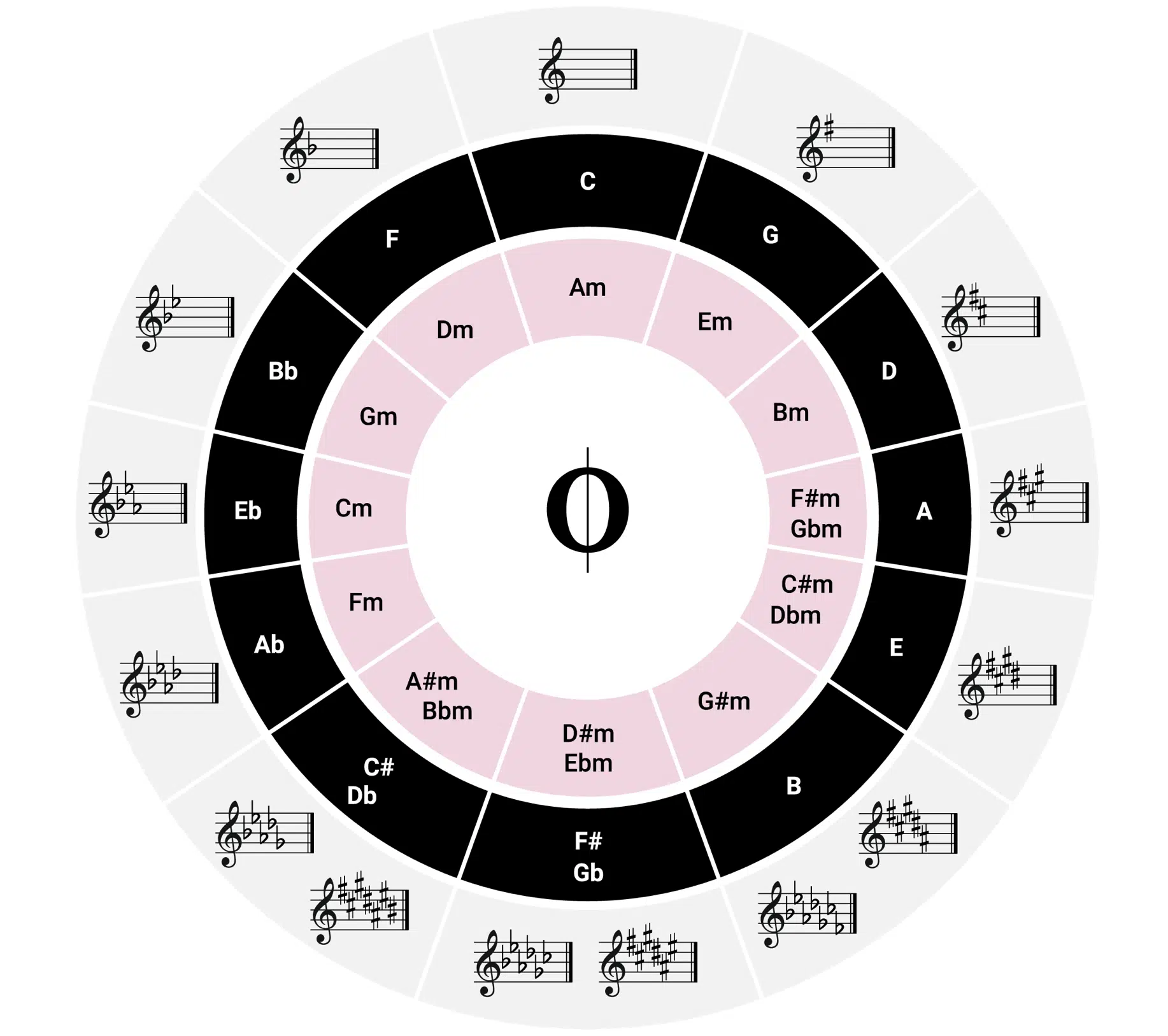
Major scales and minor scales play a pivotal role in crafting disco chord progressions.
Understanding how to use major scales and minor scales effectively requires a basic grasp of music theory and some experimentation.
- The major scale 一 Is often used to inject energy and positivity into disco tracks.
- The minor scale 一 Brings a more somber and emotional tone.
The interplay between major scales and minor scales is what gives disco music its unique, entrancing flavor.
By skillfully combining chords from a major scale and minor scale, you can create an engaging and dynamic sound.
This blend often results in a fun musical tension and release, a fundamental aspect of the genre that keeps listeners hooked.
The ability to mix and match chords from different scales (major scale/minor scale) allows for a vast range of emotional expressions.
It makes each disco song distinct and memorable, producing a great effect.
Knowledge of scales is not just a technical necessity but a creative tool for any aspiring disco music producer or artist.
Whether you’re working in a DAW or with analog equipment, understanding different scales is pivotal.
The Significance of Chords and Melodies in Disco Music
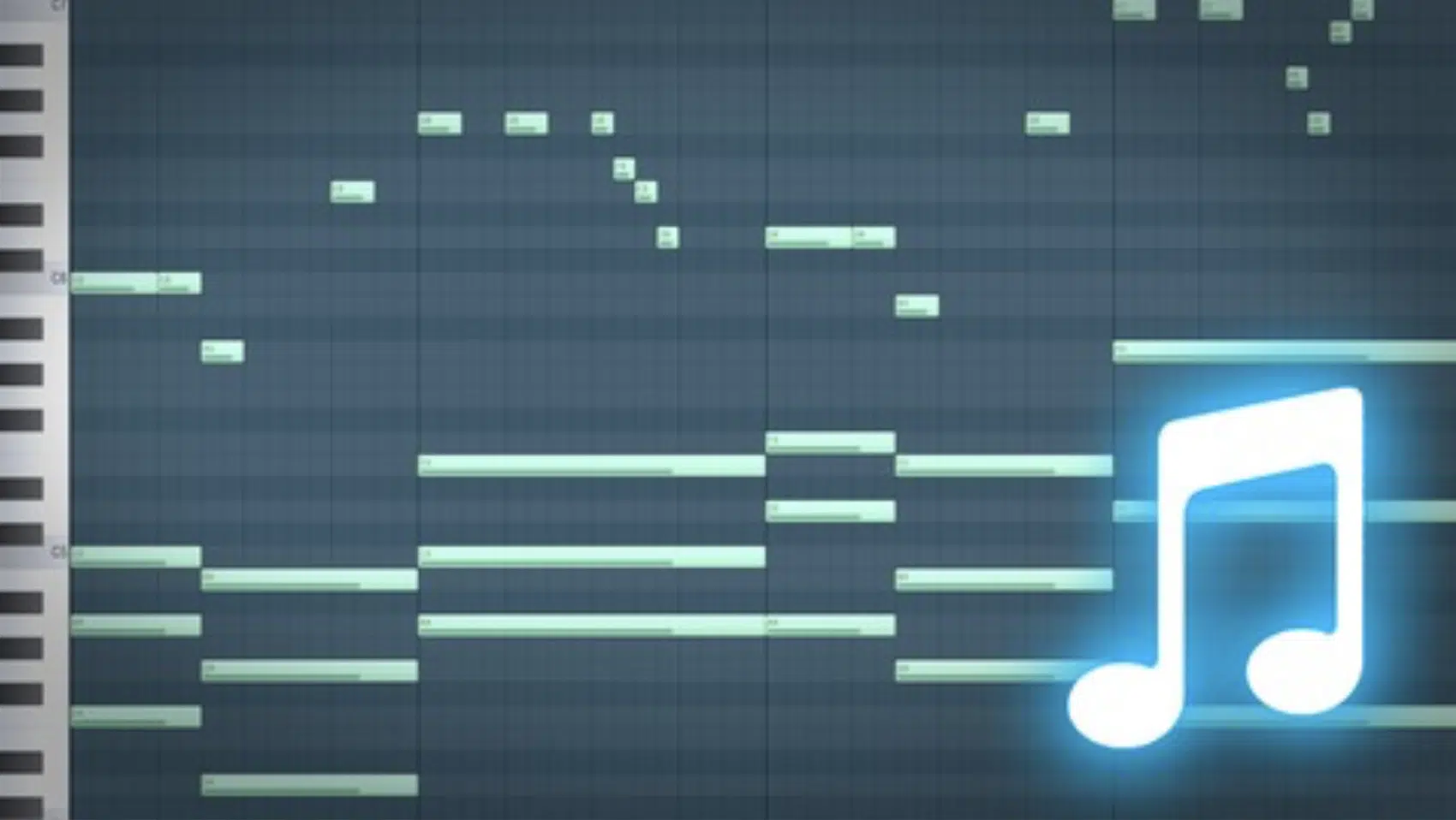
Chords and melodies are the heart and soul of disco music.
Chords provide the harmonic framework, while the melodies add the memorable hooks and motifs that define a disco track (and great music in general).
The interaction between these elements is what creates the catchy and rhythmic nature of disco music.
Melodies in disco music often follow the chord progressions, emphasizing the rhythm and adding to the overall groove of the track.
These melodies are typically simple yet infectious, designed to be easily remembered and sung along to.
The right melody can elevate a basic chord progression into a timeless disco anthem.
It will point out the fluidity of your tracks and help them sound professional.
NOTE: It’s like the chords are your left hand and the melodies are your right hand; they have to work together for every note.
The choice of chords and how they are sequenced plays a crucial role in setting the mood of the song.
For example, you can try playing:
- Staccato chords 一 For a punch effect
- Smooth, flowing chords 一 For a more laid-back vibe
Regardless of what you choose, the selection and arrangement of the chords themselves are critical.
They help in defining the song’s overall vibe and character.
A deep understanding of chords and how to effectively pair them with engaging melodies is key for any digital music producer delving into the disco genre.
Disco Chord Progressions: Rhythm and Groove Elements

Rhythm and groove are fundamental elements of disco music, and they are intrinsically linked to the chord progressions.
- The rhythm, driven by the tempo and beat pattern, sets the pace of the song.
- The groove is the feel or swing that the rhythm section provides.
The groove in disco music is characterized by a strong, steady beat with a syncopated bass line that complements the unique disco chord progressions.
This combination creates the infectious danceability that disco is known for 一 which you can instantly hear.
The rhythm section (typically consisting of drums, bass, and other percussion instruments) works with the chord progressions to establish the groove.
Understanding how these instruments, even strings, mesh is key to producing professional tracks.
For digital music producers, mastering the art of creating compelling rhythms and grooves is not only fun but crucial.
It will help you write better disco chord progressions and improve your form tenfold.
This involves understanding the technical aspects of rhythm/timing and having a feel for how different chord progressions can influence the groove.
For example, a funky rhythm section that aligns perfectly with the chord progressions can turn a simple disco track into a dance floor anthem heard around the world.
Creating Disco Tracks: Building a Strong Foundation with Root Notes & Chords
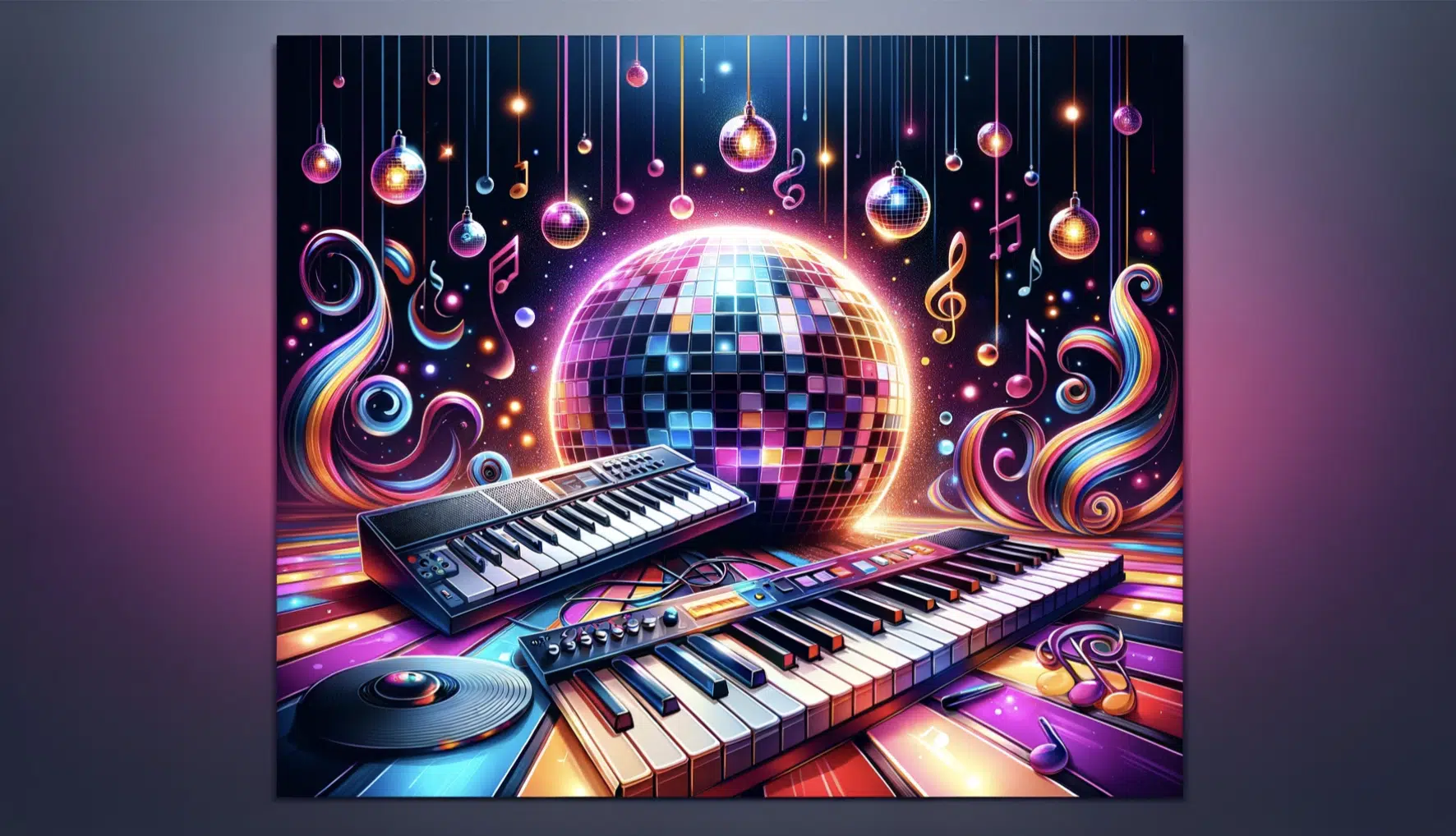
The foundation of any disco track lies in its root notes and chords.
A root note is the starting point of chords and plays a critical role in defining the tonality and mood of the chord progression.
A strong understanding of how a root note interacts with different chords is essential in creating a cohesive and compelling disco track.
Chords, as we’ve touched upon, are often used to create a sense of progression and movement within the track.
The choice of chords, and how they transition from one to another, can drastically alter the feel of a song.
Using a variety of chords (including both major and minor) adds richness and depth to the music, making it more engaging and enjoyable for your audience to listen to.
Digital music producers must pay special attention to chord selection and progression.
This involves a theoretical understanding of music theory or watching a tutorial while playing your piano (or in your piano roll).
As well as a practical sense of how different chords sound together.
Experimenting with different combinations and sequences of chords is key to developing a unique sound that can make a disco track stand out.
You will be able to hear the difference instantly.
Tips and Tricks for Unique Disco Chord Progressions
To create unique disco chord progressions, it’s crucial to blend traditional techniques with innovative approaches. Here are some tips, tricks, tools, and examples to help you craft chord progressions that are authentic to the disco style and fresh to the ears.
-
Mixing Major and Minor Chords for Dynamic Sound
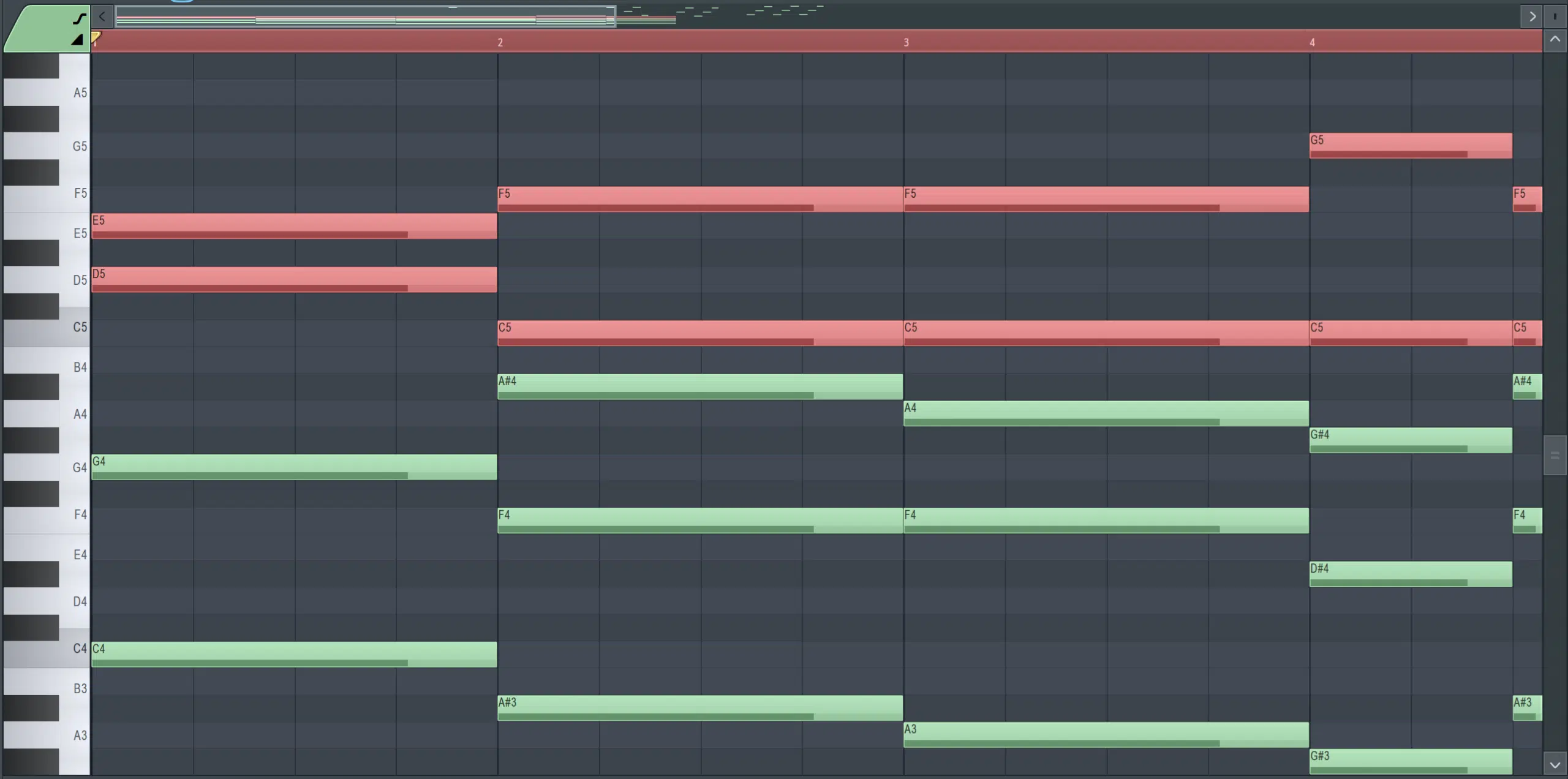
One effective way to add dynamism to your disco tracks is by mixing major and minor chords.
This approach allows for a wider emotional range 一 giving your tracks the ability to shift from joyful to melancholic tones seamlessly.
Incorporating a bit of music theory knowledge into this process can enhance the effectiveness of these chord transitions.
First example, transitioning from a major chord to its relative minor can create a subtle yet impactful shift in the track’s mood.
This funky technique, used thoughtfully, can add layers of complexity to your music, making it more engaging and memorable.
Renowned disco artists like Sister Sledge and Bernard Edwards are perfect examples of artists who incorporate this technique in almost every song.
It’s also beneficial, within the major-minor framework to experiment with:
- Chord inversions
- Extended chords (shown above)
These variations can introduce interesting textures and emphasize nuances with every single note you incorporate.
It will further enrich the sound of your disco tracks in a major way.
-
Experimenting with Rhythms and Inversions
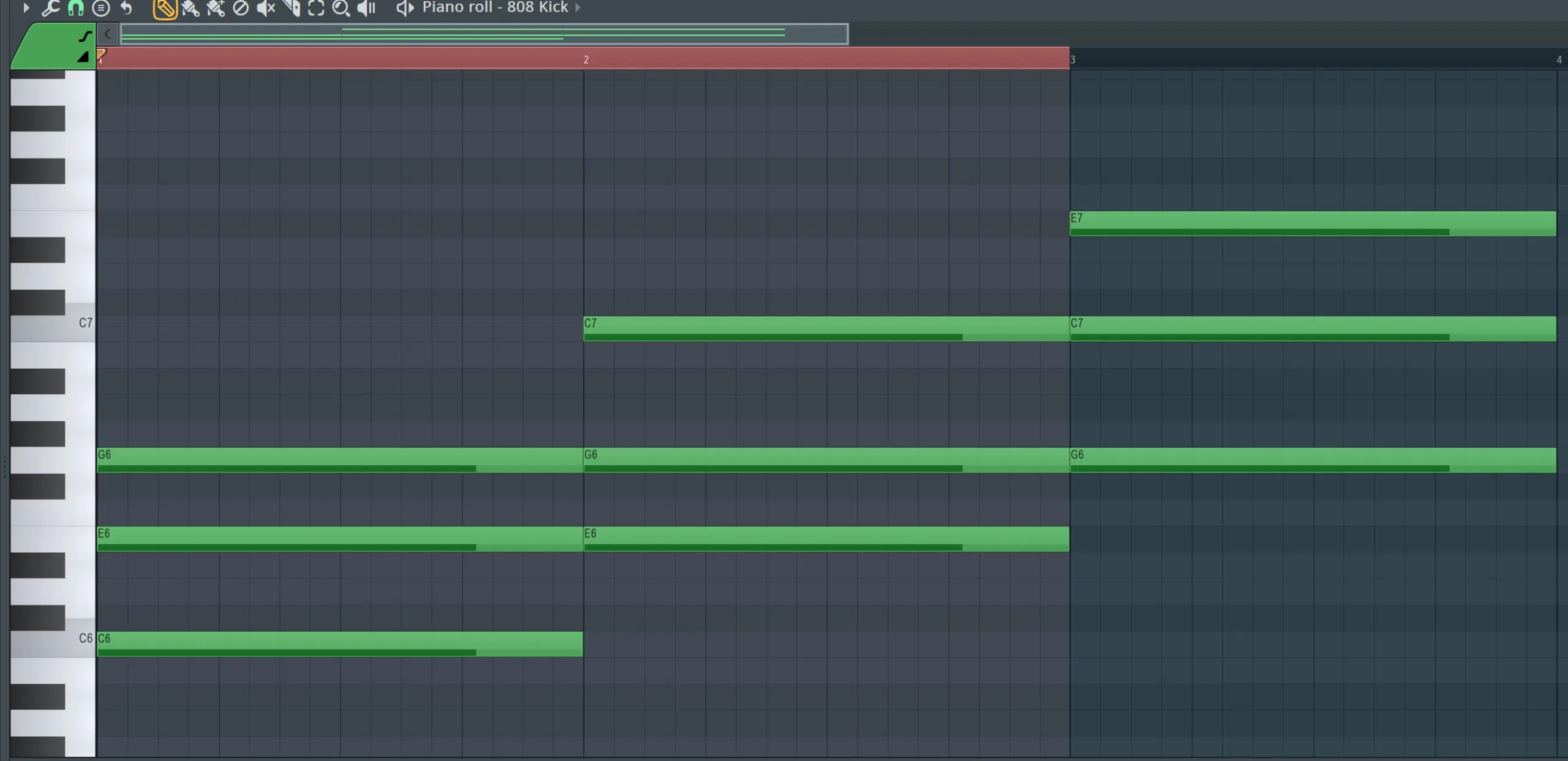
Rhythms play a significant role in defining the character of a disco track.
Experimenting with different rhythmic patterns can lead to unique and captivating chord progressions.
The key is to maintain the groove while introducing variations.
Chord inversions (shown above), where the order of the notes in a chord is rearranged, can also be a powerful tool.
They offer a fresh take on familiar chords and can be used to create smoother transitions or more pronounced rhythmic elements within your track.
Combining these rhythmic experiments with creative chord inversions can lead to innovative progressions that capture the essence of disco while pushing boundaries.
As a digital music producer, embracing these awesome techniques can elevate your tracks and showcase your skills in producing modern, yet classic-sounding disco music.
Disco Chord Progressions: Final Thoughts
Disco chord progressions are more than just sequences of chords.
They are the heart and soul of a track, offering rhythm, emotion, and a distinctive groove that’s synonymous with the genre.
We’ve delved into the significance of major and minor scales, the vital interplay of chords and melodies, and the importance of rhythm and groove in crafting that quintessential disco sound.
We’ve also covered professional tips and tricks for creating unique and dynamic disco chord progressions.
Now, to take your disco productions to the next level, you can’t miss out on this invaluable resource: the legendary Disco MIDI Chord Collection.
This collection is a treasure trove for any music producer looking to delve deeper into the disco genre.
It includes 25 major and minor genre-specific progressions for each of the 12 keys, offering an extensive range of options to experiment with and draw inspiration from.
Additionally, it provides over 35 major and minor genre-specific individual chords for each of the 12 keys 一 giving you the flexibility to mix, match, and create your unique sound.
Whether you’re crafting a track from scratch or looking to infuse existing work with authentic disco flair, this is an indispensable tool.
By utilizing this collection, you’ll not only save time but also enhance your creative process, ensuring that your tracks capture the true essence of disco.
So, dive in, explore these progressions and chords, letting this article guide you in the process of creating music that not only sounds great but also resonates with the vibrant spirit of disco.
Until next time…







Leave a Reply
You must belogged in to post a comment.